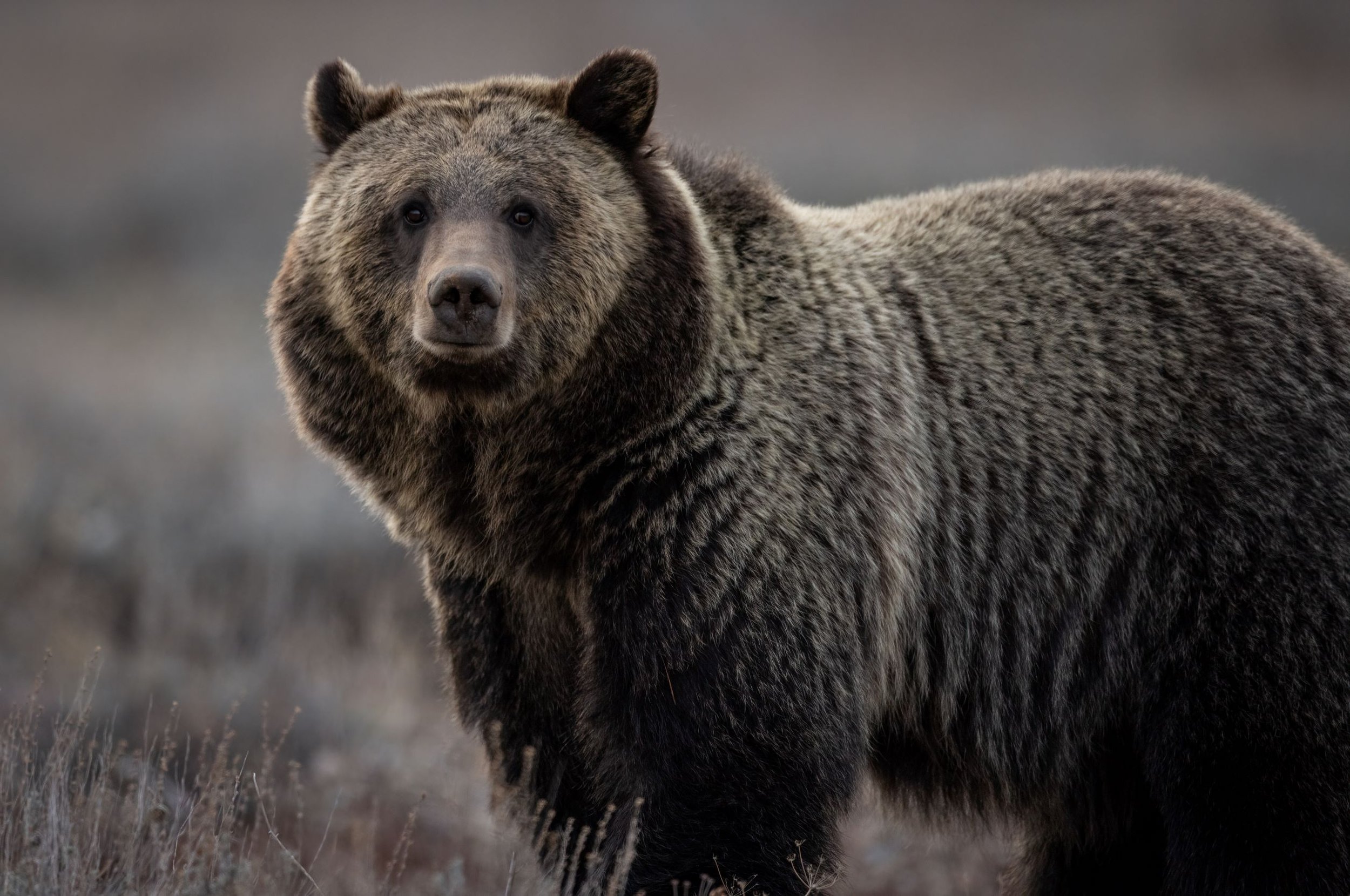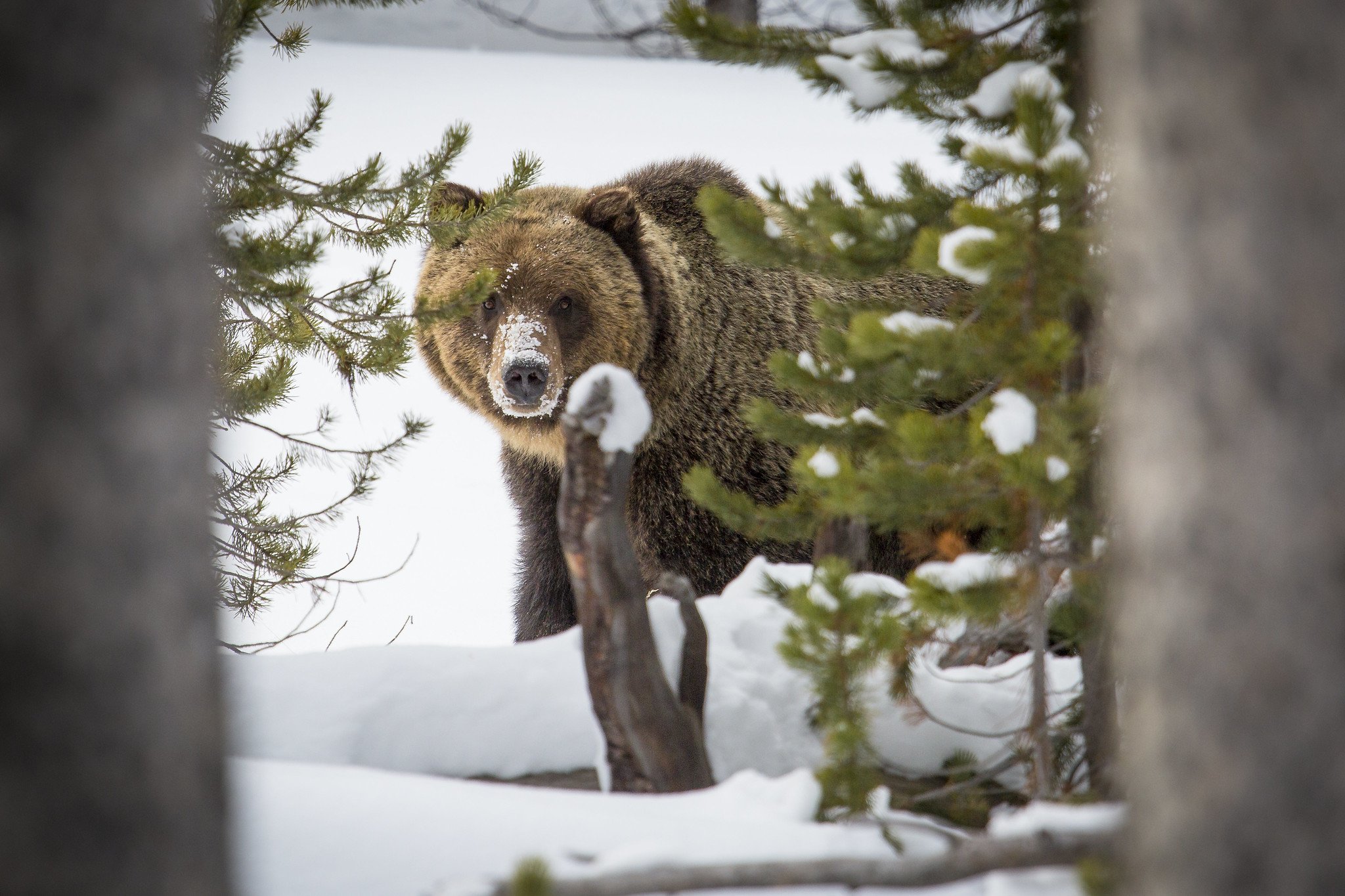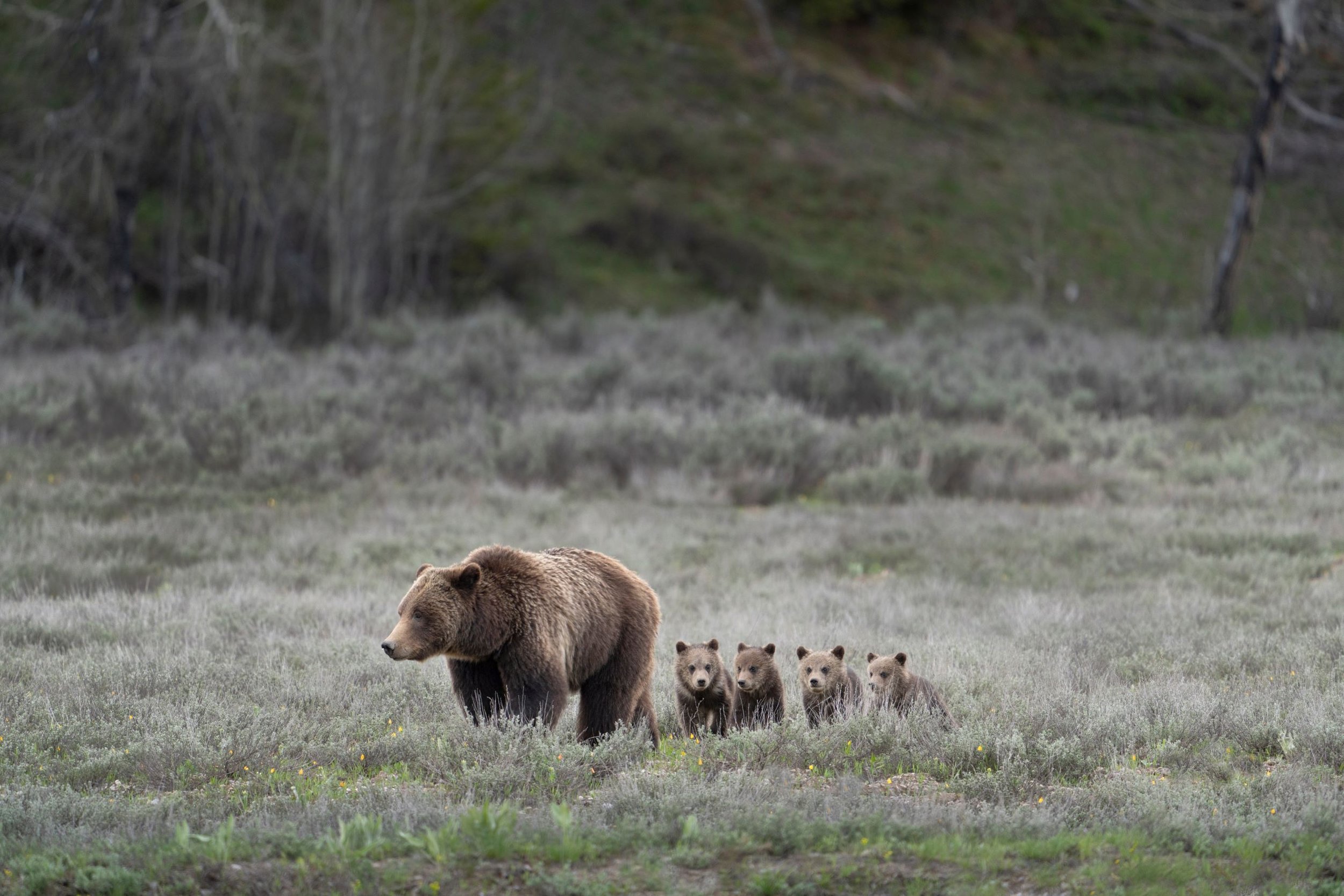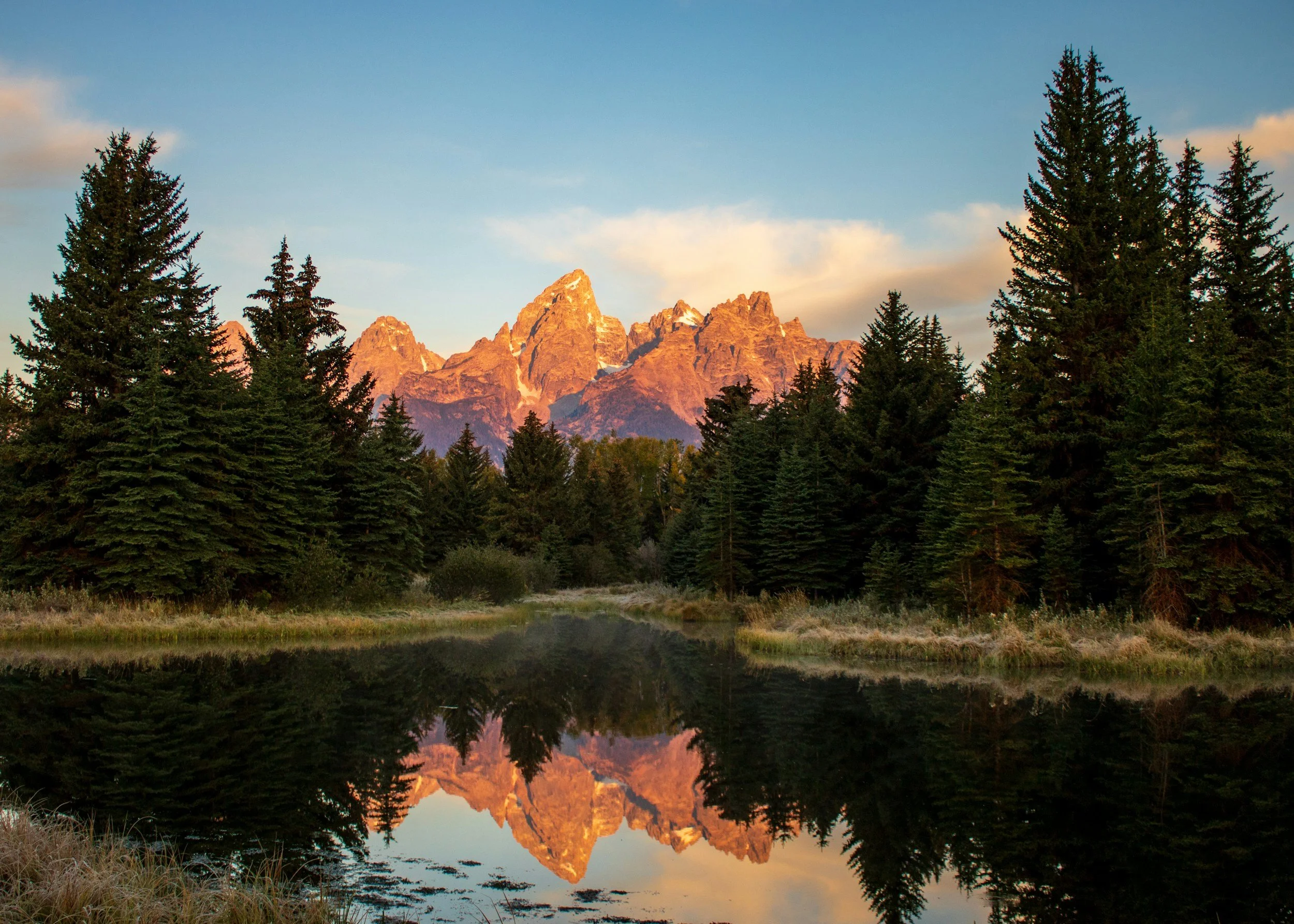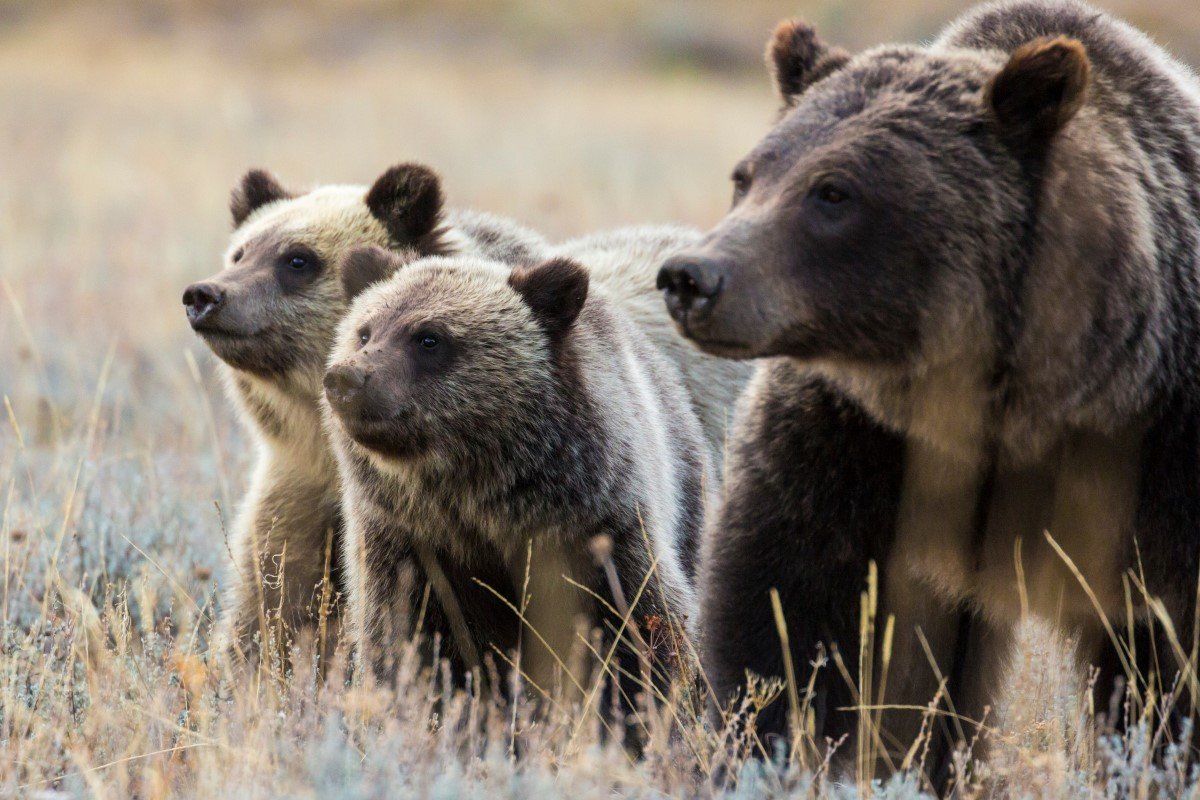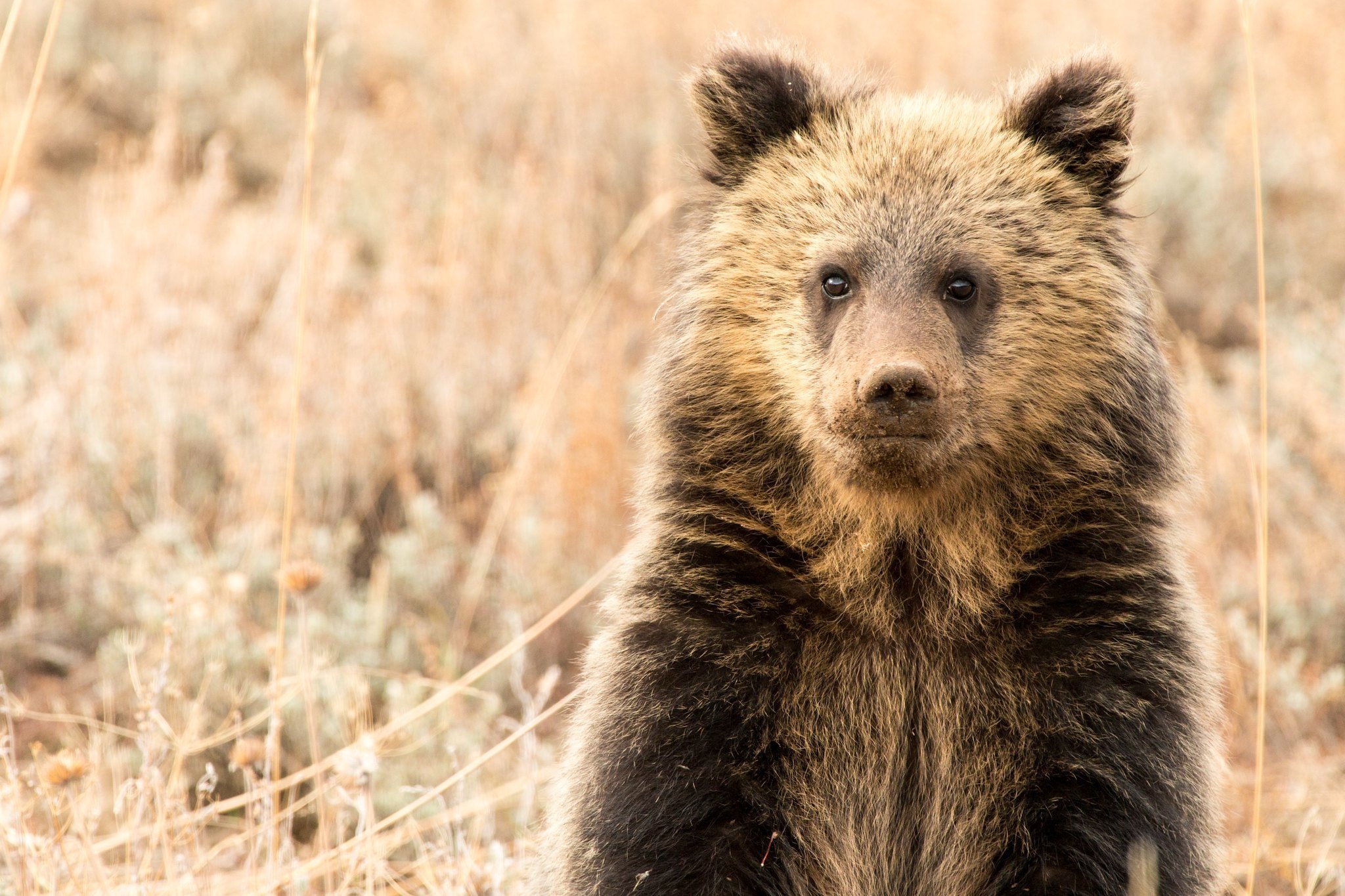
Protecting Grizzly Bears
The Symbol of a Wild Yellowstone
Greater Yellowstone’s grizzly bears are the icon of the ecosystem and represent the wild, rugged beauty of this remarkable region. They inspire awe and reverence in millions of people across the globe.
As a wide-ranging omnivore, grizzly bears play a vital role in maintaining the health of the Greater Yellowstone Ecosystem. Once on the brink of extinction, bears in this region have made a remarkable recovery. It took years of persistent work—and millions of dollars—from many organizations, agencies, and wildlife advocates to restore this important species in Greater Yellowstone. With the species no longer in imminent threat of collapse, it’s now time to pivot toward longevity and stability.
Challenges to Longevity
As the grizzly bear population continues to grow, move, and thrive in the ecosystem, bears are met with an abundance of challenges. Humans and development punctuate the landscape, making it difficult for bears to move without conflict. Grizzlies find themselves drawn to human foods and become food-conditioned, often leading to an untimely extermination. Bears begin preying on cattle and other livestock, reducing tolerance for them on the landscape. Roads and other development bisect large areas of crucial grizzly habitat, impeding their survival. Elected officials push problematic grizzly bear policies not based on the best-available science.
All these problems can affect the persistence of a healthy grizzly bear population over the long term.
Keeping Bears Wild, People Safe, and Livelihoods in Place
For decades, the Greater Yellowstone Coalition has been at the forefront of grizzly bear conservation.
Our grizzly bear conservation work is centered on three priority focus areas: conflict reduction, core habitat, and connectivity.
GYC is confident grizzly bears will succeed in the ecosystem long into the future if conflicts between people and bears are minimized, bears have access to quality core habitat, and the population is both stable and connected to other grizzly populations outside the Greater Yellowstone Ecosystem.
Our grizzly bear work includes:
Preventing conflicts with people
GYC invests in on-the-ground projects and programs that make an actual difference for grizzly bears. By working to minimize conflicts, we increase tolerance for bears on the landscape. When people’s livelihoods are secure, tolerance increases. When people are more willing to share the landscape with grizzlies, politicians are less likely to resort to extreme measures and unscientific policies to reduce their numbers and put up barriers to their long-term success.
Conserving core habitat
Decades of research shows that grizzly bear survival rates improve in correlation to factors like remoteness, suggesting secure habitat is key to bears’ ability to thrive. GYC works with myriad partners to find innovative solutions for conserving large swaths of uninterrupted habitat to support grizzly bear movement, foraging, and reproduction.
Enhancing connectivity
GYC has long advocated for interconnected grizzly populations in the lower 48 because evidence suggests this could ensure grizzlies remain resilient to environmental shifts and changes over time. By working to increase tolerance on the landscape, secure large areas of core habitat, ensure state and federal policies promote grizzly movement and address barriers to connected landscapes, Greater Yellowstone grizzly bears will have easier access to their northern relatives.
Read our recent grizzly bear conservation news.
